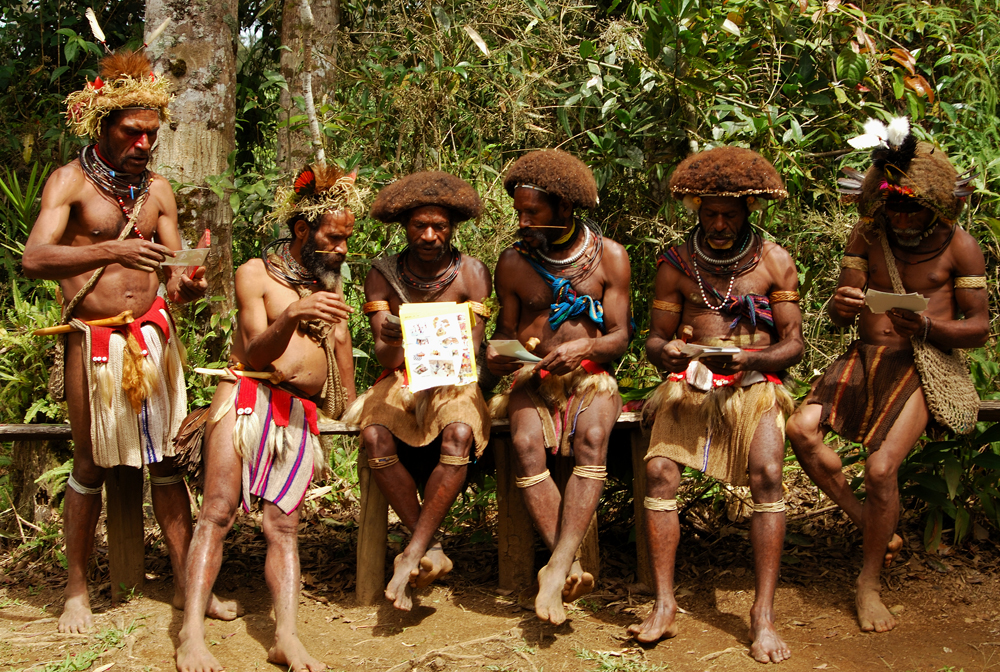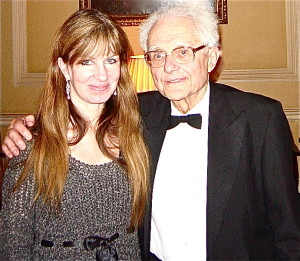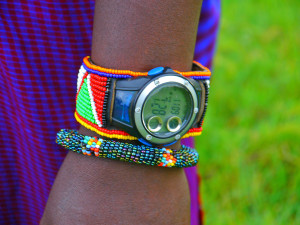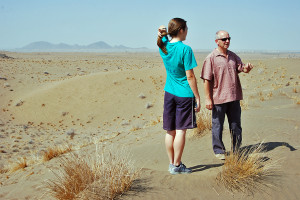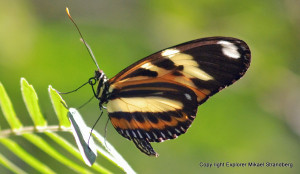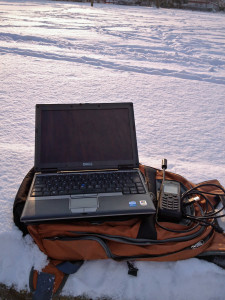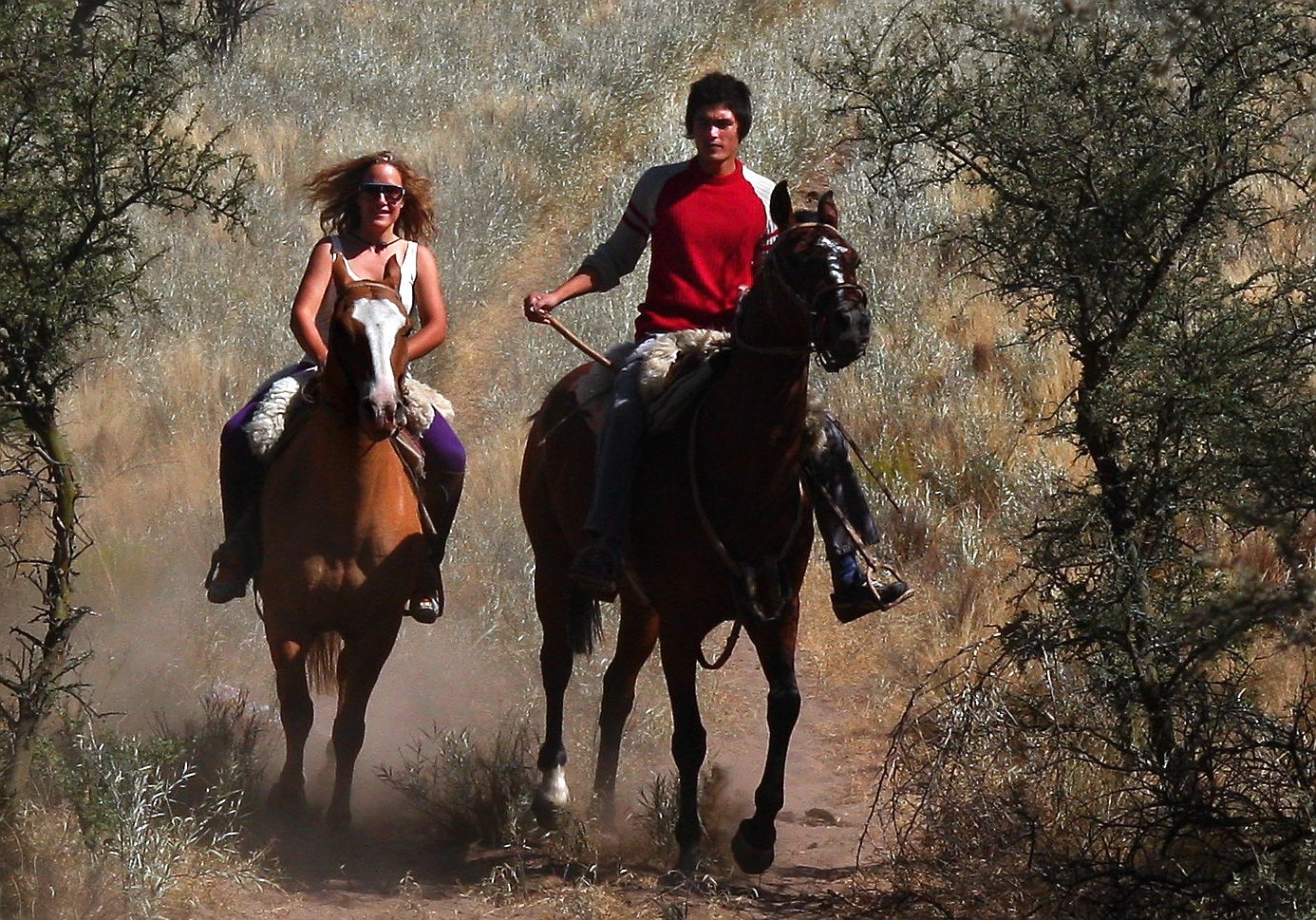Over the last week I have tried to figure out how to send dispatches via my laptop and a satellite phone. It is really amazing how one can communicate these days, even though I know, it is basically people from the richer world which will possibly read them. And, as important on a personal level, it takes too much time, causes to much worry and I wonder if it is really worth it? I mean, when I know it will only be read by the one´s who already into this kind of knowledge. Is there any chance it will bring people together? I guess one has to have a positive attitude, and believe that it might! Because building bridges between people and cultures I see as the most important issue of our time. But there´s still a gigantic gap of knowledge out there and one can really wonder of modern technology and science still makes any serious impact as regards to this fact? Explorer Club´s former president Lorie Karnath and the well known scientist Gustav Born have written a very interesting article on this extremely important subject.
The Knowledge Gap
By
Professor G.V.R. Born, FRCP, FRS
Lorie Karnath, FRGS, FRCGS
Science and its technologies, with their universal validity and utilization, should bring people together more effectively than any other human activity. Indeed, they do this brilliantly for those devoted to common research pursuits, such as the world-wide collaborations in genomics and now in proteomics, the much larger task of finding out how proteins do their work in cells; and for the commercial technologies, such as satellite communications.
But the ever-accelerating acquisition of knowledge has also had the opposite effect, through increasing the separation of those who are part of this process from those who are not. Such a gap has of course existed since modern science began in the 17th Century; but by now it has become a schism between different mental worlds. Like earlier religious schisms, this causes misunderstandings, antagonisms and confrontations.
The knowledge gap does not preclude the ability of everyone on both sides of the divide to make use of the most sophisticated scientific technologies. It is amazing how the millions who talk to each other around the world on mobile phones rarely if ever look at the little gadget with the awe it deserves. Numberless essential activities are based on scientific knowledge without needing explicit understanding. Technicians in medical laboratories know how to determine the presence or absence of each of the many proteins essential for blood clotting, without understanding how they bring this about. To do such work effectively requires, as in innumerable other activities, knowledge up to a certain level, so that imparting the knowledge-base of all imaginable skills is an important element in politicians’ calls for “education, education, education”.
But looked at right across the world this level of education remains way behind what the technological environment requires. Poor countries struggle to maintain the even more basic learning needed for survival. In many countries education is impeded by bigotry, as when the Taliban imposed a total ban on women’s education in Afghanistan , and as in some parts of the United States where teaching of the theory of evolution is forbidden-this at a time when the President of the Royal Society can speak of Darwin ’s theory as having much the same standing as Newton ’s law of gravitation. Even those going up to University from the best- and most expensive-private schools may be thoroughly conversant within the humanities while lacking all knowledge of basic biology or even of their own body functions, thus reinforcing C.P. Snow’s “two cultures”.
Thus, whilst just about everybody uses scientific technologies, only a small proportion understand or want to understand what they are using. Many people lack the time, the energy or the willingness to take in new kinds of information and to think in unfamiliar ways. To the extent that that remains true, this knowledge gap persists.
But knowledge is no more than a tool in the quest for understanding. Understanding the mechanisms of blood clotting may be of no direct concern to laboratory technicians but is crucial for devising antithrombotic drugs. This understanding came about when Gwyn Macfarlane in Oxford and Oscar Ratnoff in Cleveland independently proposed that each of the many essential proteins acts on the next in a sequence or cascade, ending with the formation of the insoluble protein fibrin that makes the clot. The general point is that the juggling of quite a limited number of facts in receptive scientific minds can bring forth far-reaching generalizations. That has been the essence of scientific discovery, and shows up the gap between knowledge and understanding.
In many fields of science this modus operandi is in danger of being buried under avalanches of new knowledge. From astrophysics to genetics and proteomics, technological developments in combination with computerization are generating factual information at much greater rates than individuals or even super-computers can cope with. This has created a new kind of gap within the scientific community itself, by producing opposing effects on the discovery scene.
On the one hand, it is undermining the classical road to discovery. This was put starkly by the Research Director of a renowned pharmaceutical company: “We are no longer interested in new drug ideas. Our entire effort is concentrated on screening hundreds of thousands of compounds for potential therapeutic activities.” In The Future of Life Edward Wilson makes the same point, namely that serendipity is the hallmark of pharmacological research; he should have inserted the word “now”. It seems that approaches based on knowledge and understanding of disease are going out of favor. When blind technology ousts understanding to that extent, something of proven worth must be getting lost. Presumably there will be no follow-up flashes of insight such as the moment when Hans Kosterlitz, after years of hard-won knowledge about morphine, asked himself why the poppy should produce such a potent pain killer: might a substance with similar actions be present in the brain itself? This simple question opened up a new and fruitful field of knowledge about pain relief, something of great importance to every human being.
On the other hand, none of this is to deny the potential of serendipity. Edward Wilson gives examples in support of his assertion that chance discovery can lead not only to a successful drug but also to advances in fundamental science, which in time yield other successful drugs. One of Wilson ’s examples is a synthetic drug more effective than opium as a pain killer but non-addictive, a discovery based on screening of the toxins produced by a Columbian poison dart frog. As this work is in the same field as that of Kosterlitz, mentioned earlier, it brings out the contrast very clearly. Another example concerns the discovery of cyclosporin, a powerful suppressor of the human immune system, used routinely to prevent rejection of transplanted organs, which was discovered during routine screening from an obscure Norwegian fungus.
What all this tells us is that much of science is becoming ever more a process in which a discovery is expected to emerge from a multitude of interactions rather than being the clear-cut result of one person’s ideas and experiments. This development is making itself felt even in the Nobel prize awards. According to Alfred Nobel’s will, the prizes for physics, chemistry and physiology or medicine cannot be shared by more than three persons. Nowadays the prize is usually so divided, presumably because of difficulties in acknowledging individual contributions.
In principle it should remain possible to fish new ideas out of the oceans of information, and no doubt this is happening. But many scientists feel obliged to keep up with new technologies and new results in their fields; and they may thereby be practically-“no time”- and psychologically-“all too much”-hindered from what should always be their core activities-thinking and imagining.
Thus there is a gap within the scientific community between what might be called the automaters and the cerebraters. Presumably both are needed for progress from now on. Actually it is conceivable that even their joint endeavors may hit an ultimate barrier to understanding nature’s greatest complexities, such as the cosmology conundrums, the interdependence of species, and the human brain; as J.B.S. Haldane said: “The world may not only be queerer than we think but queerer than we can think.”
For their part the general public, by no means well informed about science in the first place, is faced with ever more limited access to new knowledge by barriers of difficult technologies and terminologies. At the same time people are bombarded by journalistic announcements of amazing discoveries and new therapies well before they are confirmed. The capabilities of new technology and the significance of new knowledge are difficult to make intelligible. It is not surprising therefore that the public becomes indifferent to all this newness and discouraged about science and what it stands for. Pari passu people become more susceptible to the blandishments of all kinds of unscientific nonsense, most dangerously to pseudo-medical nonsense such as homeopathy, which may preempt proper diagnosis and treatment of serious disease.
Well-devised efforts to combat misinformation and to get the scientific basis of modern life across to the general public are made by bodies such as the Committee for the Public Understanding of Science (COPUS) of the British Royal Society: but the scale of the task limits success. So the gap between the scientific know-hows and the know-nots is actually being widened by the progress of science, and presents an increasing obstacle to cooperation and so becomes a cause for anxiety.
Lorie Karnath is an avid explorer, adventurer, author who has canvased the globe in search of answers to elusive questions. Most recently she served for three terms as the 37th president of The Explorers Club only the second woman in the club’s 108 year history to be elected.
Gustav Born is a medical dr and scientist who discovered platelets among other things, he is considered one of the fathers of heart medicine and is also the son of Nobel laureate Max Born who started quantum physics.
Lorie and Gustav have written a children’s book on science together called “Wohin geht die Sonne, wenn ich schlafe?” (Where Does the Sun Go When I am Sleeping?) Nymphenburger ISBN 10: 3485010758 ISBN 13: 978-3485010757
